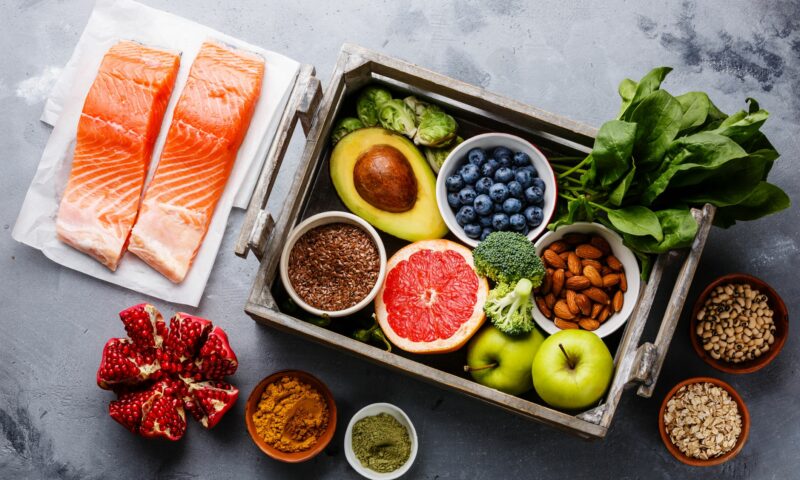By Spy Uganda
Research has shown that certain foods can lower blood pressure. Combining these foods in the diet may lead to long-term health benefits.

Medications, dietary changes, and other lifestyle modifications can reduce high blood pressure, or hypertension, while lowering the likelihood of developing associated conditions. High blood pressure increases a person’s risk of heart disease, stroke, and kidney disease.
Types of food that may help include: fruits, such as kiwi and oranges, vegetables, for instance, green leafy vegetables and beets nuts, for example, pistachios and walnuts, oily fish, such as mackerel, spices, such as cinnamon.

In this article, we discuss foods that can help reduce high blood pressure, and provide scientific evidence.

1. Berries

Blueberries and strawberries contain antioxidant compounds called anthocyanins, a type of flavonoid.
In one older study, the researchers looked at data for over 34,000 people with hypertension over 14 years. Those with the highest intake of anthocyanins — mainly from blueberries and strawberries — had an 8% lower risk of high blood pressure than those with a low anthocyanin intake.

2. Bananas
Bananas contain potassium, which can help manage hypertension. One medium-sized banana contains around 422 milligrams (mg) of potassium.
According to the American Heart Association (AHA), potassium reduces the effects of sodium and alleviates tension in the walls of the blood vessels.
The Office of Dietary Supplements advises that males aim to consume 3,400 mg of potassium daily and females — 2,600 mg.
People with kidney disease should consult a doctor before increasing their intake of potassium, as too much can be harmful.
A serving would be 1 large banana, 1 cup of sliced banana, or two-thirds of a cup of mashed banana.
3. Beets
Drinking beet juice may reduce blood pressure in the short and long term, because it contains dietary nitrate.
A 2015 study found that people with hypertension who drank 250 milliliters (ml), or about 1 cup, of red beet juice every day for 4 weeks had lower blood pressure. The researchers recorded an average fall in blood pressure of 7.7/5.2 millimeters of mercury (mm Hg) over a 24-hour period.
A serving of beet is around 1 cup, which is around 2 small beets or 1 large one.
4. Dark chocolate
Cacao, an ingredient in dark chocolate, contains flavonoids, an antioxidant. Flavonoids may help reduce blood pressure, according to the AHA.
However, it notes that a person may not be able to consume enough flavonoids in dark chocolate for it to have significant benefits.
The AHA says that a small amount of chocolate from time to time can be part of a balanced diet. It advises, however, that people eat it because they enjoy it, not for health reasons.
5. Kiwis
A daily serving of kiwi can help manage mildly high blood pressure, a 2015 study suggests.
People who ate 3 kiwis per day for 8 weeks saw a more significant reduction in systolic and diastolic blood pressure than those who ate 1 apple per day for the same period. The study authors note that this may be due to the bioactive substances in kiwis.
Kiwis are also rich in vitamin C. In an older study, people who consumed around 500 mg of vitamin C per day for about 8 weeks saw significant improvements in their blood pressure readings.
Kiwis are easy to add to lunches or smoothies. One cup of kiwi, or 2–3 kiwifruits, makes up 1 serving.
6. Watermelon
Watermelon contains an amino acid called citrulline.
The body converts citrulline to arginine, and this helps the body produce nitric oxide, a gas that relaxes blood vessels and encourages flexibility in arteries. These effects aid the flow of blood, which can lower high blood pressure.
In one older study, adults with obesity and mild or prehypertension took watermelon extract containing 6 grams (g) of L-citrulline/L-arginine.
After 6 weeks, the participants saw a reduction in blood pressure in the ankles and brachial arteries. The brachial artery is the main artery in the upper arm.
In a small 2019 study, 27 people consumed either watermelon juice or another drink before exercise. The females who drank watermelon juice did not experience a rise in blood pressure after exercise, although the males did.
7. Oats
Oats contain a type of fiber called beta-glucan, which may have benefits for heart health, including blood pressure.
A 2020 rodent study found that beta-glucan and avenanthramide C, both present in oats, reduce levels of malondialdehyde, a marker of oxidative stress in hypertensive rats. These results suggest that ingredients present in oats can help prevent high blood pressure and protect heart health in other ways.
9. Garlic
Garlic has antibiotic and antifungal properties, many of which may be due to its main active ingredient, allicin.
Garlic can enhance the flavor of many savory meals, including stir-fries, soups, and omelets. It can also be an alternative to salt as a flavoring.
10. Fermented foods
Fermented foods are rich in probiotics, which are beneficial bacteria that may help manage blood pressure.
In 2020, researchers analyzed data for 11,566 adults aged 50 years or older in Korea. The results suggest that women who had gone through menopause and ate fermented soy foods had a lower risk of hypertension. However, this did not appear to be true for men.
Sodium is a risk factor for high blood pressure, and experts advise people to limit their salt intake. However, a 2017 study did not find that eating salt-fermented vegetables increased the risk of high blood pressure, despite the high sodium content.








